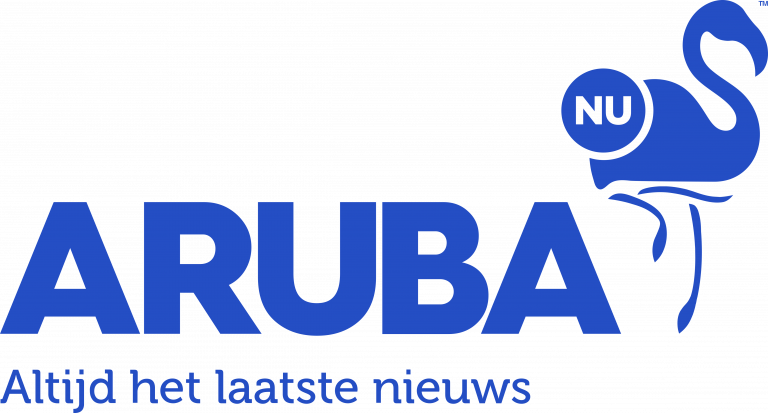DUTCH TAX PACKAGE 2010
Introduction
Like every year, just before the year-end, various legislative tax proposals were adopted in the Netherlands (Tax Package 2010). These proposals contained a very large number of amendments in Dutch tax legislation (most of) which became effective as from 1 January 2010. Besides these, the amended Inheritance Tax Act also became effective from 1 January 2010.
Unfortunately, these legislative amendments are too extensive to be discussed in detail in this newsletter. Therefore we will only discuss a limited number of these.
Segregated private assets (afgescheiden particuliere vermogens; APVs)
In the past, many taxpayers attempted to evade paying tax by letting their assets ‘float’. To this end the assets were placed in a trust or foreign foundation, for example. The founder would argue that the assets placed in the trust or foundation were no longer his, whereas the persons appointed as beneficiaries did not declare these assets as long as they had not actually received amounts of money from the trust or foreign foundation. In this way the assets are segregated, whereas ordinarily the trust or foundation itself is not taxed, either.
As from 1 January 2010 the law prescribes that such segregated private assets are to be treated as “fiscally transparent”. This means that the trust or foundation is fully ignored for tax purposes. The contributor continues to be liable for tax for the assets transferred; also if the APV was founded before 1 January 2010.
Example
Mr X, residing in the Netherlands, transfers his savings to an Antillean Stichting Particulier Fonds (private fund foundation) (SPF). It is stipulated that upon Mr X’s death, the assets transferred are to be paid out to his children. In that case, Mr X will need to declare the savings in box III (“income from savings and investments”), despite the fact that the SPF is a legal entity, and manages the funds transferred in its own name. No gift tax needs to be paid over the contribution. However, when Mr X dies, inheritance tax is due if the tax-free allowances have been exceeded. Subsequently the savings are regarded as box III capital of the children.
There are several exceptions to the fiscal transparency. For example, the assets are not allocated to the contributor if the trust or foreign foundation is independently involved in the taxation at a rate in excess of 10%. This exception is however not applicable in the example given above: for, assuming that normal asset management is involved, the SPF will not be subject to Antillean profits tax.
Gift tax and inheritance tax
The rates for gift tax and inheritance tax have been decreased substantially. For example, the top rate for inheritance by nephews and nieces has been lowered from 68% to 40%. In addition, higher exemptions have been introduced and acquisitions of businesses with a value up to EUR 1 million have even been exempted totally (previously being 75%). Insofar as the value of the business is more than EUR 1 million, the excess value is subject to an exemption of 83%. Moreover, payment of the tax due in that case can be postponed for 10 years. This way, business succession is considerably less impeded by the levy of gift tax and inheritance tax than it was before 1 January 2010.
An amendment that may be relevant to residents of Aruba having assets in the Netherlands, is the abolition of transfer duty (recht van overgang)and the cancellation of the exemption of transfer tax (overdrachtsbelasting) for real estate donations.
Example
Mr X, residing in Aruba, has a piece of real estate in the Netherlands which he intends to donate to his brother. Before 1 January 2010, transfer duty would have been due in the Netherlands, since such real estate was regarded as a “domestic asset”. However, since early this year, this is no longer the case. On the other hand, 6% transfer tax is due. Also, Mr X’s brother has to pay Aruban inheritance tax, since he acquires from a resident of Aruba.
Transfer facilities substantial interest
If a shareholder owns more than 5% of the shares in a company, he has a “substantial interest”. Donating the shares is then regarded as a disposal. As a result, in principle 25% tax is due over the difference between the value in economic transactions and the acquisition price of the shares (box II).
On 1 January 2010, however, a transfer facility (doorschuiffaciliteit) was introduced for the donation of shares that are part of substantial interest (“AB shares”). There is no need to settle; the acquirer of the shares is allowed to take over the original acquisition price – and consequently the non-realised increase in value – from the giver. However, this transfer facility can only be applied if and to the extent that the company the shares of which are donated, runs a material business, the acquirer is also a domestic taxpayer and the acquirer was employed by the company in question during the three years preceding the donation.
Example
Mr X, residing in the Netherlands, has 50% of the shares in an Aruban N.V. that operates a restaurant. The acquisition price of these shares is USD 100,000. In 2010, Mr X donates the shares to his son who has been a director of this N.V. for many years and is also a resident of the Netherlands. At that moment his shares represent a value of USD 200,000. In principle, Mr X would enjoy a taxable profit of USD 100,000 (USD 200,000 minus USD 100,000) and therefore be liable for tax in box II to the amount of USD 25,000 (25% of USD 100,000). Because the N.V. operates a material business and Mr X’s son has been employed by the Aruban N.V. for more than three years, there is no need to settle. If several years later the son sells his shares in the Aruban N.V. and at that moment the shares have a value of USD 250,000, he will have to pay income tax over the benefit of USD 150,000 (USD 250,000 minus de original acquisition price of his father of USD 100,000).
If the son of Mr X had not been living in the Netherlands, but in Aruba, for example, as a result of which he was not a domestic taxpayer, the donation would have resulted in a suspended assessment in respect of Mr X. This assessment would subsequently have been collected upon the subsequent sale of the shares by his son.
There already existed a transfer facility for the inheritance of AB shares. However, this was not subject to the condition of a material business being operated in the company the shares of which were transferred under inheritance law. Therefore a transfer of the original acquisition price of the shares was also possible if all the assets of this company had been invested. From 1 January 2010, this is no longer possible; also for inheritance of AB shares, a material business must be involved. However, a compensation is granted in the event that the invested assets are paid out as dividend within two years after death: the dividend will not be taxed, but will be debited to the acquisition price of the shares.
Revival mortgage interest tax relief after temporary rent
If a former owner-occupied dwelling is vacant and is put up for sale, it can still be considered as an owner-occupied dwelling for a certain period of time. The mortgage loan interest that is paid in connection with this dwelling, continues to be tax deductible in box I (“income from work and home”). However, if the dwelling is let temporarily, this mortgage interest tax relief will be cancelled permanently, i.e. also after the letting has ended and the dwelling is vacant again. However, due to the crisis on the housing market the mortgage interest tax relief “is revived” for the years 2010 and 2011 if the owner-occupied dwelling regime had been applicable had the dwelling not been let temporarily.
Example
In 2009, Mr X and his family emigrated permanently to Curaçao (Netherlands Antilles) and put up for sale his former dwelling in the Netherlands. In that case, the mortgage loan interest is still deductible up to a maximum of two years after the calendar year in which the dwelling was vacated, i.e. up to and including 2011. However, since no potential buyers can be found, Mr X decided to rent out the dwelling in 2010 for one year. As a result, the mortgage loan interest – if the normal rules were applied – would no longer be deductible, even if the dwelling would subsequently be vacant and put up for sale again in 2011. Based on the temporary easing of the rules, however, the mortgage interest paid in 2011 can also be deducted from Mr X’s taxable income.
Penalty for persons not declaring savings
Last year, the Dutch State Secretary of Finance, Mr De Jager, targeted taxpayers hiding their assets abroad to evade taxes. The Netherlands has concluded a treaty with a large number of countries which provides for the exchange of information. Although this does not allow the Dutch tax administration to ask for all the information it desires, De Jager time and again warned that the days of banking secrecy were over.
To further step up the pressure on persons not declaring savings, effective from 1 July 2009 the offence penalty for not declaring assets in the tax return was increased to a maximum of 300% of the tax due in box III. On top of this, the so-called inkeerregeling (voluntary disclosure scheme) has been cut back since 1 January 2010. Persons who previously had not declared their savings but declare their foreign assets to the tax administration as yet, are due not only the tax evaded and an interest on tax due (over the past twelve years), as they were previously, but also a 15% penalty over the taxes due if the assets have been in foreign accounts for more than two years. Also because of these changes and the extra input of the tax administration, in 2009 as many as 7000 people who had not declared their savings, made use of the (former) voluntary disclosure scheme, in total declaring 2 billion euros on foreign assets.
Aruba and the Netherlands, incidentally, have been automatically exchanging data from interest payments by banks in one country to residents of the other country since July 2005, in the context of the “European Savings Tax Directive”.
Other changes
Other measures from the Tax Plan Package 2010 include, among other things:
From 2010, as was also the case in 2007, application of the tax exemption for subsidiaries is subject to the “intention test”, with the “assets test” and the “tax liability test” as “escapes”.
Accelerated depreciation in two years for investments in operating assets made in 2010 (therefore 50% in 2010 and 50% in 2011). The same applied for investments made in 2009.
Losses made in 2009 and 2010 can be carried back during three years instead of only one year. The drawback of this is however that carry-forward of losses is only possible during six years instead of nine.
Under certain conditions, a property that is made available by a director with a substantial interest can be transferred in 2010 without income tax or transfer tax being levied.
Abolition of the hours criterion (a minimum of 1225 hours worked) for the SME profit exemption; in addition to this, this exemption has been increased from 10.5% to 12% of the profit.
Gomez & Bikker law – www.gobiklaw.com
By: J.J. Hoevenaars LL.M. [email protected]
C.J.B. Oldenhof LL.M. [email protected]













